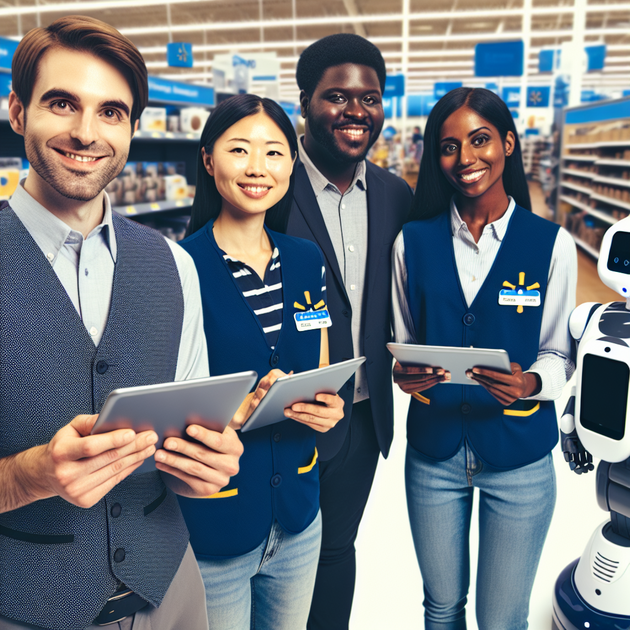What happens when one of the world’s biggest employers promises not to cut jobs—right as artificial intelligence is set to change every job in its stores? That’s exactly what’s happening at Walmart, where CEO Doug McMillon just shared a bold vision for how the company plans to navigate the rise of AI in retail. In a conversation reported by Fortune, McMillon said he wants “everybody to make it to the other side.” No layoffs are planned for now; in fact, he expects headcount at Walmart will stay “about flat.” So what does this mean for millions of workers—and for anyone interested in how technology is changing the workplace?
AI Isn’t Taking Over—But Every Job Will Change
The phrase “AI will change every job” can sound scary. But McMillon isn’t talking about robots replacing cashiers overnight. Instead, he sees artificial intelligence becoming part of daily life at work—helping staff do their jobs better and faster.
Here’s why keeping headcount flat matters so much:
- Stability for workers: Employees won’t have to worry about sudden layoffs tied directly to new technology.
- Time to adapt: Staff can learn new skills and adjust as changes roll out gradually.
- Better service: With humans still central to operations, customers should keep seeing friendly faces in stores.
How Is Walmart Using AI Right Now?
If you’ve shopped at Walmart lately, you might’ve already seen some subtle changes thanks to AI and automation—think self-checkout kiosks or apps that help track inventory faster than ever before. But behind the scenes, there’s even more happening:
- AI-powered scheduling tools help managers build shifts that work better for everyone.
- Automation in warehouses speeds up restocking—but humans still oversee and solve problems when things go wrong.
- Customer data tools help predict what shoppers want before they even walk in.
What Does ‘Making It To The Other Side’ Really Mean?
This phrase from the Walmart CEO has stuck with many people. It means helping current employees not just survive a wave of change—but actually thrive in it. Instead of seeing technology as a threat, McMillon wants it to be something that lifts everybody up.
An Anecdote from Inside Retail
A friend who works at another big retailer once told me about her experience when new tech first arrived on her sales floor. At first, everyone was anxious about touchscreens replacing registers—but after hands-on training and lots of support from managers, staff found these new tools made their lives easier. They could spend less time on tedious tasks and more time helping customers or learning new things on the job. That same story seems set to play out at Walmart—with leadership promising not just new tech but also real support for workers learning it.
The Road Ahead: Will All Retailers Follow?
Walmart’s approach stands out because it rejects the idea that technology must mean fewer jobs—and instead bets on helping people grow alongside machines. The real question is whether other big retailers will make similar promises as artificial intelligence continues changing how we shop and work.
- Investing in training: Companies can help employees learn new skills instead of being left behind.
- Communicating clearly: Sharing plans early builds trust when big changes are coming.
- Putting people first: Balancing tech upgrades with real concern for workers keeps morale high.
No one knows exactly what the future holds—but with leaders like Doug McMillon saying they want “everybody to make it,” there’s hope that technology won’t just reshape jobs—it’ll create better ones.
Your turn: If your employer introduced new tech tomorrow, would you feel ready? What would help you most during big workplace changes like these?

Leave a Reply